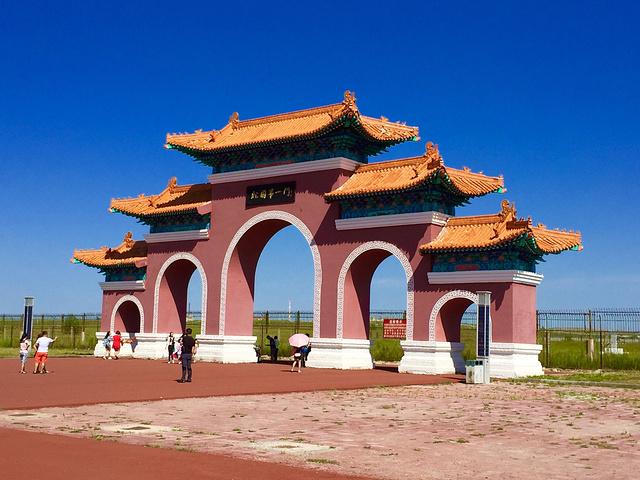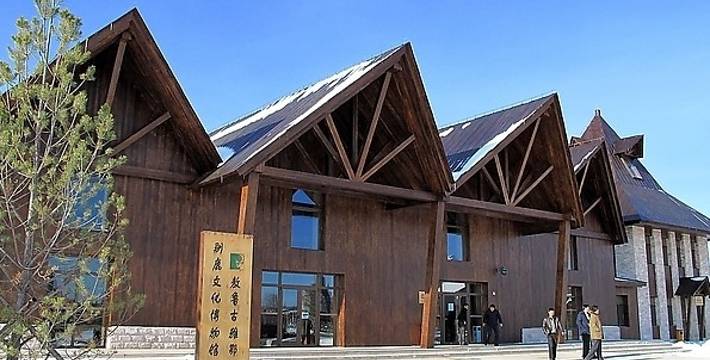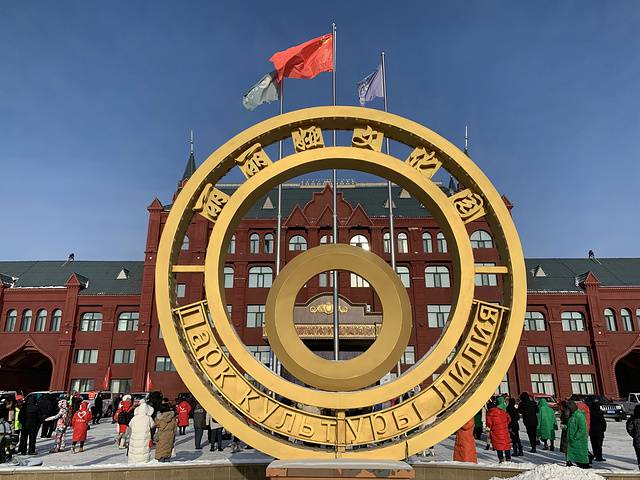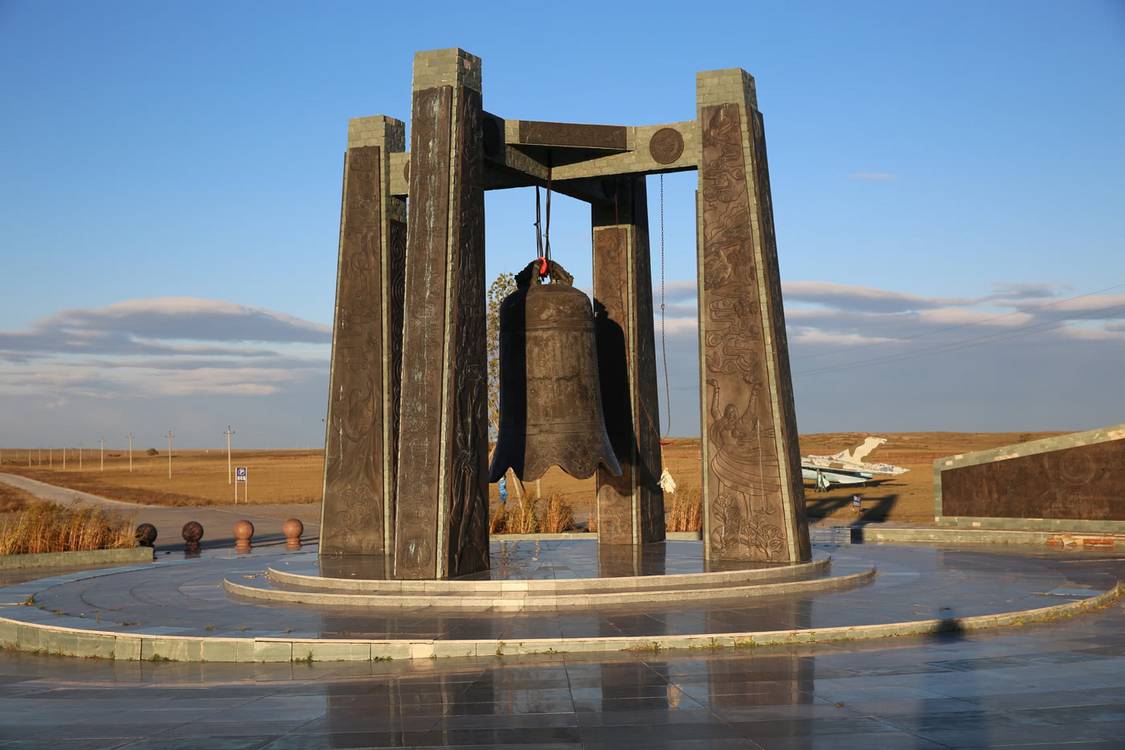Hulunbuir Nationality Museum
Located near Shengli Street in Hailar District, Hulunbuir City, Inner Mongolia. The Hulunbuir Nationality Museum, which houses more than 10,000 items, officially opened on June 20, 2009. It is the only comprehensive museum in Hulunbuir City, featuring distinct regional and ethnic characteristics. It is one of the key museums at the Inner Mongolia Autonomous Region level. The museum contains replicas of mammoth fossils unearthed in Zhalainuoer, replicas of the 'Zhalainuoer Man' skull fossils, and various ethnic daily necessities.
Aoluguya Museum
Here, visitors can gain a more comprehensive understanding of the Aoluguya reindeer culture. Aoluguya, located at 52 degrees north latitude, is an ancient and mysterious ethnic group. The museum covers an area of 1500 square meters, with an exterior mainly featuring wooden decorations that highlight ethnic characteristics, providing a visual impact. The museum integrates education, history, and aesthetics, serving as a modern exhibition hall with multiple functions including exhibitions and cultural displays. The museum is divided into six exhibition halls, showcasing the hunting, birch bark, shamanism, animal skins, reindeer, and Arctic Circle cultures of the Aoluguya Ewenki reindeer tribe through high-tech means such as videos, sound and light effects, and 3D technology.
Zhalainuoer Museum
Zhalainuoer Museum is located in Zhalainuoer District, Hulunbuir City, adjacent to National Highway 301 to the south. It is a leisure and entertainment center that showcases regional history, culture, and natural resources. It is the largest museum in Hulunbuir and another concentrated display site of Mongolian Yuan culture in Hulunbuir. The museum is divided into three exhibition halls: Zhalainuoer History and Culture Hall, Hulun Lake Ecological Wetland Hall, and Zhalainuoer Coal Hall.
The Ewenki Museum was built to celebrate the 40th anniversary of the establishment of Ewenki Banner. It is the first museum in China dedicated to introducing and showcasing the political, economic, cultural, and historical development of the Ewenki people. The museum was established in 1996, and since its opening, its unique ethnic charm has attracted a large number of experts, scholars, and tourists. Covering an area of 10,000 square meters, the museum's architecture combines modern style with ethnic characteristics. The Ewenki Museum houses a rich collection of exhibits, including precious cultural relics, plant and animal specimens, artifacts, and photographs. The exhibition combines both flat and three-dimensional displays, showcasing the profound and magnificent history of the Ewenki people, their colorful ethnic customs, and contemporary Ewenki culture. The Banner History Hall displays the development, construction achievements, and bright prospects since the establishment of the Ewenki Autonomous Banner.
Lilia Leba Manor
Zhongke Lilia Manor is located in Eerguna City, Hulunbuir, Inner Mongolia Autonomous Region, offering a panoramic view of vast grasslands from its tranquil location. From the highway, you can see the unique architecture of Zhongke Lilia Manor, which is already taking shape. The main building, Lili Mansion, with its red paint and Eastern European architectural features, might make you think you've stepped into the Red Square in Russia. The symmetrical geometric iron towers on both sides are reminiscent of Russian towers influenced by French minimalist architecture of the late 18th century. The two iron towers face each other, converging at the central musical fountain, creating a balanced and harmonious scene. Especially at night, when the neon lights on the buildings light up, the changing colors enhance the serene night, making the main building and the surrounding scenery appear even more dazzling and radiant.
World Anti-Fascist Memorial Park
The World Anti-Fascist War Hailar Memorial Park is located in the northern part of Hailar city. It is designated as a national 5A-level war-themed park, covering a total area of 110 hectares. The park is built on the site of the former Japanese Hailar Fortress and serves as a military-themed red tourism destination that integrates patriotism, internationalism, and revolutionary heroism. It is one of the few theme parks of its kind in China.
Nomonhan Battle Site Exhibition Hall
The Nomonhan War Site is located 60 kilometers south of Amugulang Town, the seat of New Barag Left Banner in Inner Mongolia, China. In 1994, it was designated as a patriotic education base and a key cultural relic protection unit at the Inner Mongolia Autonomous Region level. The Nomonhan Battle Site Tourist Area covers an area of 2.97 square kilometers and is divided into four functional zones: the main reception area, the military entertainment area, the military exhibition area, and the comprehensive service area. It includes six major scenic areas (entrance scenic area, evidence scenic area, annihilation scenic area, eternal peace scenic area, field camping scenic area, and quality training scenic area) and 46 attractions. The exterior design of the exhibition hall resembles a sealed bunker, with a construction area of 2264 square meters, using a frame structure, and the main building is four stories high. The overall color scheme of the exhibition inside the hall is dominated by a solemn gray reminiscent of rocks, complemented by strong metallic colors to reflect the war scenes and political situation of the time. High-tech means such as sound, light, and electricity are used in the exhibition to create an immersive sensory experience.

















